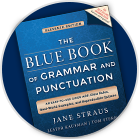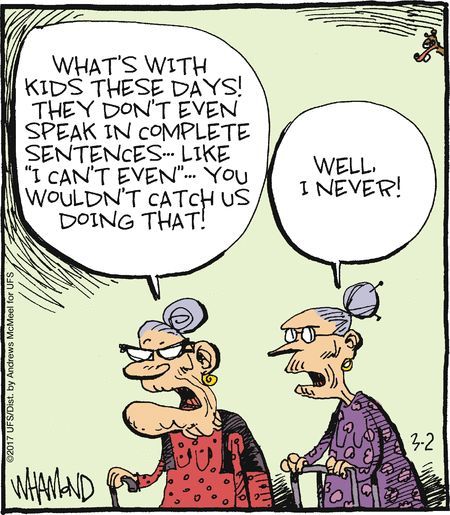Becoming Savvy with Sentence Structures: Part One
|
|
The art of writing resembles any trade that begins with the basics and
evolves into skillful applications of them. A key component of precise and
eloquent composition is understanding sentence structures.
English comprises four foundational sentence constructions: simple,
compound, complex, and compound-complex. In part one of our discussion,
we’ll review simple and compound sentences.
Simple Sentence
A simple sentence has one subject and one verb. It does not have a
dependent (subordinate) clause, one that cannot stand alone as a sentence
(e.g., when the boys return). Simple sentences also may include
parts of speech such as direct and indirect objects, adjectives, adverbs,
and infinitive and prepositional phrases.
Dogs (subject) bark (verb).
Regina (subject) gave (verb) her sister (indirect object) a card (direct object).
Antonio (subject) painted (verb) his old bike (direct object) red (adjective) yesterday (adverb).
Inga’s brown dog (subject) likes (verb) to sleep (infinitive phrase) on his side (prepositional phrase).
The subject (indicated by a single underline in the three sentences that follow), the verb (bold), or both may be compound in a simple sentence:
The moon and the stars came into view.
The pitcher threw six innings and hit a double.
The king and the queen each raised a hand and waved.
We can change syntactical positions in a simple sentence:
Above the law they are not.
There was no response to the question. (In this sentence, the word there is an expletive, a filler word for emphasizing the phrase no response to the question; without the expletive, the simple sentence would be No response to the question was given.)
Her parting glare he ignored.
Simple sentences can be further categorized as statements, commands,
requests, questions, and exclamations:
Statement: You write well.
Command: Write well.
Request: Would you please write well?
Question: Do you write well?
Exclamation: You write well!
Compound Sentence
A compound sentence has at least two main (i.e., independent) clauses
joined by a conjunction and a comma or by a semicolon:
Antonio painted his old bike red yesterday, and he will paint his
scooter the same color tomorrow.
She writes well, but she is still improving at math.
The dreams of my youth have passed; the hopes of my future await.
For strong technique, we want to avoid compound sentences with loose and
protracted constructions. This can sometimes happen when we string multiple
clauses together.
Loose/Protracted: Angelique went to the store, and then she stopped at the post office, and next she picked up the kids.
Better (simple sentence with a compound predicate, i.e., verb or verb phrase):
Angelique went to the store, stopped at the post office, and picked up
the kids.
Loose/Protracted: The book was on the table, and Jason saw it, and he picked it up and started reading it.
Better (two independent clauses joined by a semicolon):
Jason saw the book on the table; he picked it up and started reading
it.
Loose/Protracted: They owned the team, and they were ambitious people, and they invested profits back into the franchise.
Better (consolidated simple sentence): The ambitious team owners invested profits back into the franchise.
In Part Two of “Becoming Savvy with Sentence Structures,” we
will explore how to recognize and use complex and compound-complex
sentences. Also watch for Part Three, in which we’ll look at how to
apply the four sentence types to achieve style and effect in our writing.
|
View and comment on this
article on our website.
|
|
Pop Quiz
Using what you've learned in this article, identify whether each example is a simple sentence or a compound sentence.
1. I want to learn how to play the piano this year.
a. Simple
b. Compound
2. Next to greatness they will be, and behind mediocrity they will be not.
a. Simple
b. Compound
3. The jury has convened; the hour of decision is near.
a. Simple
b. Compound
4. Make sure you get to school on time!
a. Simple
b. Compound
|
Free BONUS Quiz for You!
[[firstname]], because you are a subscriber to the newsletter, you get access to one of the Subscribers-Only Quizzes. Click here to take a Clauses and Phrases Quiz and get your scores and explanations instantly!
We will be adding many more quizzes this year to our already substantial list of quizzes. If you have suggestions for topics we have not yet covered, please send us a message at help@grammarbook.com.
|
Hundreds of Additional Quizzes
at Your Fingertips
Subscribe now to receive hundreds of additional English usage quizzes not found anywhere else!
Teachers and Employers
Save hours of valuable time! You may assign quizzes to your students and employees and have their scores tallied, organized, and reported to you! Let GrammarBook.com take the hassle out of teaching English!
"Fun to test my skills."
"The explanations really help ... thanks!"
"I can select the quizzes to assign to my students, and then the results are reported to me automatically!"
|

|
Don't need all the quizzes?
You can now purchase the same quizzes individually for ONLY 99¢ each.
Purchase yours here. |
If you think you have found an error in a quiz, please email us at help@grammarbook.com
|
 |
The Blue Book of Grammar and Punctuation
by Jane Straus, Lester Kaufman, and Tom Stern |
The Authority on English Grammar! Eleventh Edition Now Available
An indispensable tool for busy professionals, teachers, students, homeschool families, editors, writers, and proofreaders.
Available in print AND as an e-Book! Over 2,000 copies are purchased every month!
The publisher of The Blue Book, Jossey-Bass, A Wiley brand, is offering a 35 percent discount for those of you who order the book through Wiley.com. Shipping and tax are not included. Simply go to bit.ly/1996hkA and use discount code E9X4A.
Offer expires December 31, 2020.
|
Wordplay

Pop Quiz Answers
1. I want to learn to play the piano this year.
a. Simple (The sentence has a subject, a verb, and a direct object, the
infinitive phrase to learn to play the piano this year.)
2. Next to greatness they will be, and behind mediocrity they will be not.
b. Compound (The sentence has two independent clauses joined by a comma
and the coordinating conjunction and.)
3. The jury has convened; the hour of decision is near.
b. Compound (The sentence has two independent clauses joined by a
semicolon.)
4. Make sure you get to school on time!
a. Simple (The sentence has a subject, the understood you; a verb; and a
direct object, the verb phrase get to school on time. This simple sentence
is a command.)
|
 |
English In A Snap:
68 One-Minute English Usage Videos FREE |
Learn all about who and whom, affect and effect, subjects and verbs, adjectives and adverbs, commas, semicolons, quotation marks, and much more by just sitting back and enjoying these easy-to-follow lessons. Tell your colleagues (and boss), children, teachers, and friends. Click here to watch.
|
|





